The Oni Who Sank to the Bottom of the Sea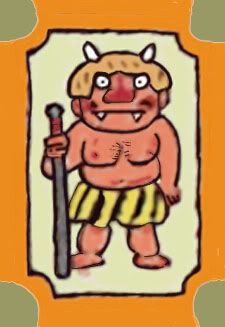 |
The Kamishibai Classroom
The Kamishibai Classroom: Engaging Multiple Literacies Through the art of "Paper Theater" by Tara McGowan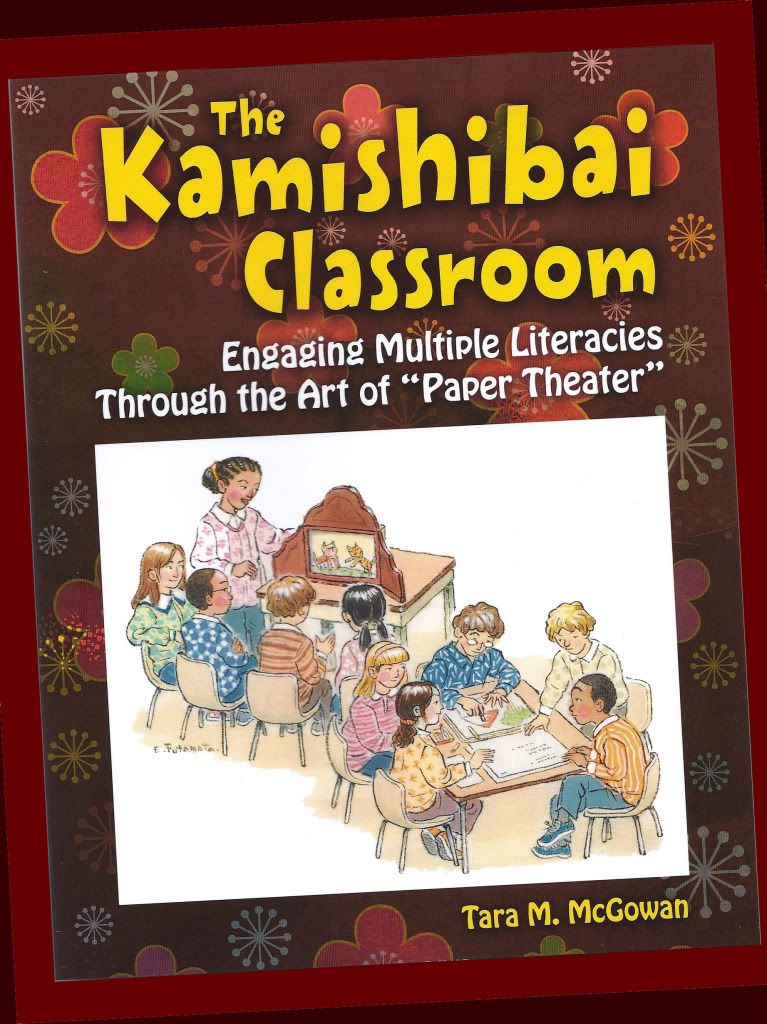 |
The Art of Japanese Paper Theater
For more information please go to our website!
Jeffrey Dym's videos How to use kamishibai and Kamishibai in the classsroom |
Kamishibai:
A Versatile Tool to Develop
Reading, Writing
and Oral Storytelling Skills
|
|
Quick Links
Caldecott Medalist
Allen Say
Remembers
Kamishibai
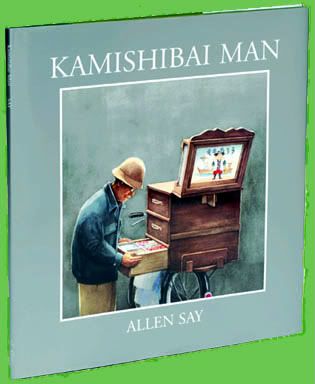
Asian Zodiac Postcards
2 examples:
|
|
|
The Oni Who Sank to the Bottom of the Sea
Featured kamishibai : The Oni Who Sank to the Bottom of the Sea |
The hurricane season is upon us. From August, the Japanese archipelago is visited by typhoons, which are similar to hurricanes but originate in the China Sea or western Pacific Ocean. The large, outlying islands of Okinawa, Kyushu and Shikoku are often hit first and hardest by these violent storms. The legend of The Oni Who Sank to the Bottom of the Sea comes from Kure, a seaside town on the island of Shikoku, which is naturally protected by three, unusually shaped boulders at the entrance to its harbor. As in many other parts of the world, such a legend explains how important natural phenomena came to be. In Japan, it is said that supernatural giants - called oni in Japanese - placed the boulders at Kure.
Oni are popular characters in Japanese folktales and legends. They are distinguished by their tremendous size, strength and fearful appearance - horns on their heads, sharp teeth and tiger skin pants attire. While the oni in this tale are not identified by their color, oni are often classsified as being red or blue. Unlike the oni in other tales, our protagonist has an interesting mix of human and superhuman qualities and like nature itself, is both fearful and benevolent. The dramatic text written by Miyoko Matsutani, a master Japanese storyteller and writer, together with the rustic simplicity of the illustrations by award-winning Eigoro Futamata combine to make an unforgettable telling of how an oni saved an old man, his grandson and the village of Kure from a deadly typhoon. |
Illustration by Eigoro Futamata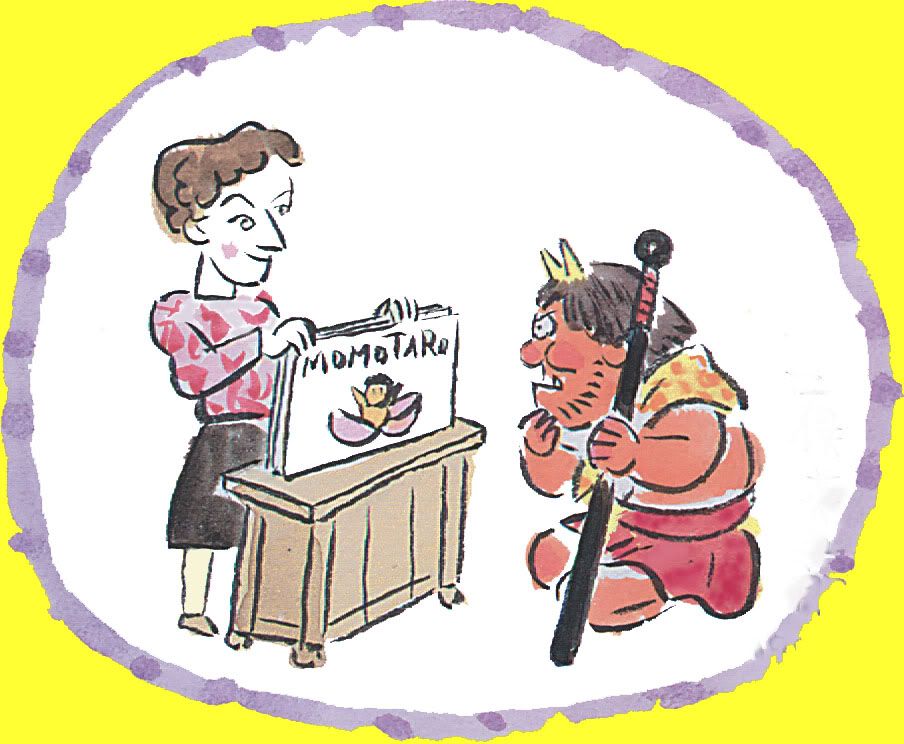 |
Oni enjoying kamishibai
|
|
Gaitő kamishibai-ya, or the early street performing artists in Japan, drew extensively upon interactive storytelling techniques to capture and hold the attention of their young audiences. Having audiences tell the story along with the performer or contribute key elements of the story as it unfolded, kept children actively engaged in performances and intrigued enough to come back for more stories day after day despite a distracting backdrop of busy urban streets. Teachers in large classrooms might want to draw upon these techniques for some of the same reasons and with an additional motive that has practically become a truism of 21st century education: children learn more when they are actively involved in their learning. (For a discussion of these and other techniques of interactive storytelling, see chapter 4 of my book, The Kamishibai Classroom: Engaging Multiple Literacies through the Art of "Paper Theater" [Libraries Unlimited, 2010].

Tara M. McGowan is a doctoral candidate at the University of Pennsylvania's Language and Literacy in Education Division of the Graduate School of Education. |
|
Chicks ready to learn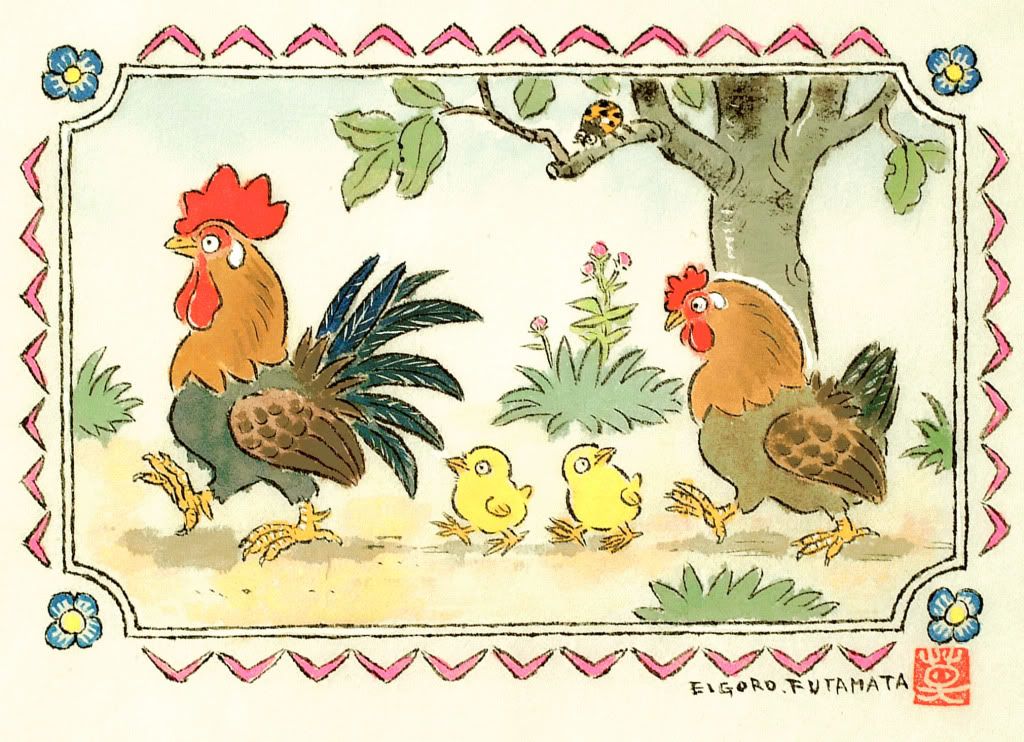 | Fledglings
The young chickadees and nuthatches born early this summer have been busy fattening up at our feeder.
They are almost the same size as the adult birds, but when they hang upside down on the perches or try pecking at the seeds they give themselves away. As I watch them, I realize that there is a technique to landing precisely on the feeder. By the end of the summer, they have become experts at landing and are ready to join their flock as full-fledged members.
Watching this drama each day, I am reminded of children learning and growing both physically and mentally during the summer months - in a free, loosely structured environment. As children "flock together" with their classmates and teachers in autumn, the schools brim with vitality and the children are ready to be engaged. It is an ideal time to capture their creative energy and introduce them to the captivating world of kamishibai storytelling, first as an audience, then later as imaginative authors/illustrators and performers!
DT, Surry ME
|
|
|